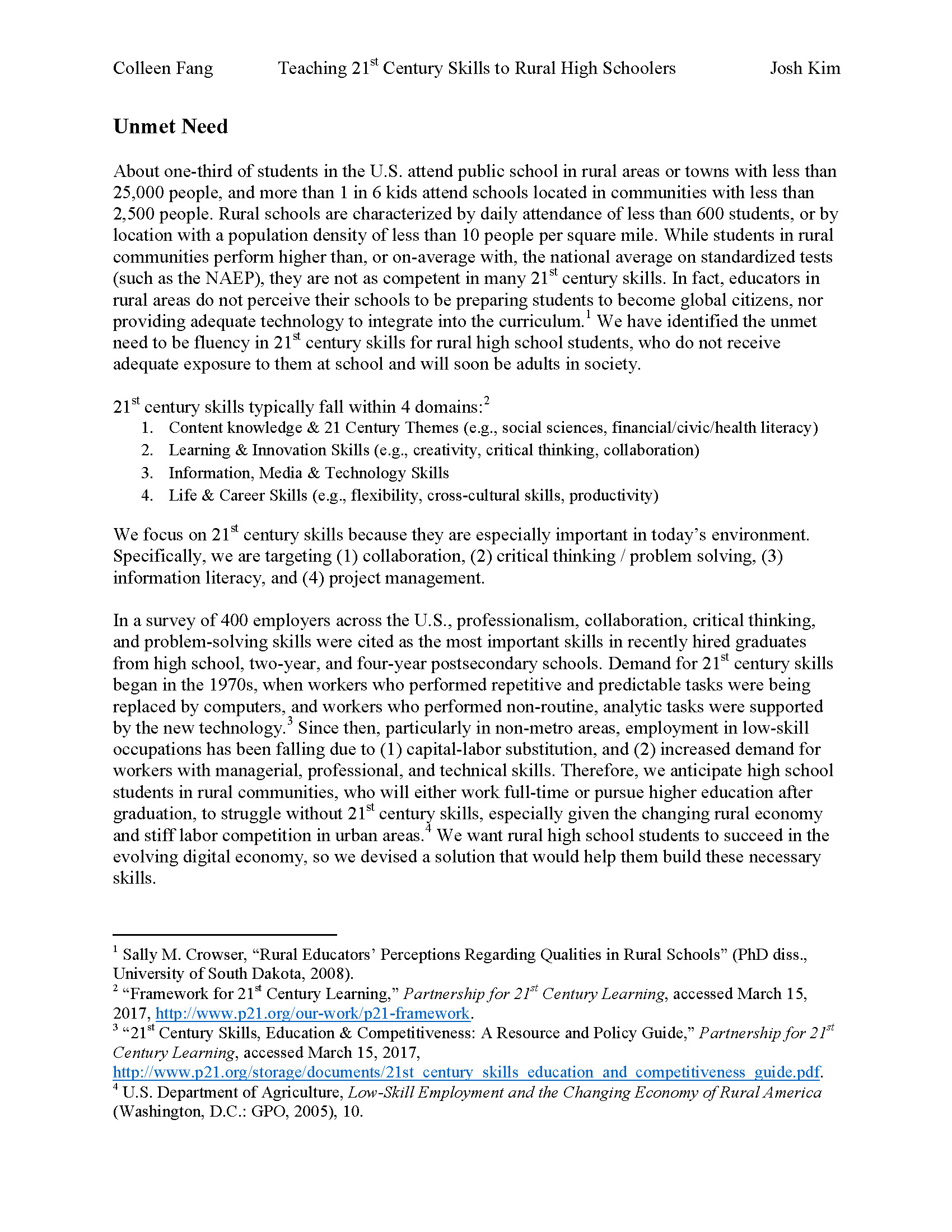Mysterious Learning
2017, in collaboration with Colleen Fang
About one-third of students in the U.S. attend public school in rural areas or towns with less than 25,000 people, and more than 1 in 6 kids attend schools located in communities with less than 2,500 people. Rural schools are characterized by daily attendance of less than 600 students, or by location with a population density of less than 10 people per square mile. While students in rural communities perform higher than, or on-average with, the national average on standardized tests (such as the NAEP), they are not as competent in many 21st century skills. In fact, educators in rural areas do not perceive their schools to be preparing students to become global citizens, nor providing adequate technology to integrate into the curriculum.
We focus on 21st century skills because they are especially important in today’s environment. Specifically, we are targeting (1) collaboration, (2) critical thinking / problem solving, (3) information literacy, and (4) project management. Some critical issues that plague rural schools in the US are the lack of fiscal resources (e.g. federal and state funding), unreliable broadband internet, difficulty in retaining qualified teachers, and access to educational opportunities.
Target audience
We are focusing on “rural territory that is more than 5 miles but less than or equal to 25 miles from an urbanized area,” and “rural territory that is more than 2.5 miles but less than or equal to 10 miles from an urban cluster.” We assume that this town of less than 50,000 people receives moderate broadband and cell access, provided by either federal/state funding or corporate funding. Given that rural areas in the U.S. have historically not been racially or ethnically diverse, we assume that our learners are white, non-Hispanic primary English speakers. They mostly live in married households with parents who hold at least a high school diploma. However, it would be unlikely for their parents to hold post-graduate degrees – in 2015, only 19% of rural adults ages 25 and older held a bachelor’s degree or higher, which was 14% lower than the education of urban residents.
OVERALL DESIGN STRATEGY
Storyboard
Prototype Walk-Through
The design of our solution accommodates our learners’ contextual restrictions, such as the rural community’s lack of technological resources and limited physical interactions among students outside of a structured classroom setting. While gamified learning is one of the most effective and powerful ways to engage students and encourage participation, a common criticism of games is that their design often heavily focuses on the short-term goals and provision of immediate quantitative feedback. These types of application exploit extrinsic motivation, and therefore tends to induce unsustainable drive and absence of long-term interest. This often causes the student’s primary goal to be focused on achieving higher scores and/or a higher level.
Unlike those games, our 8-week summer program aims to maintain our learners’ motivation, and is therefore designed to “reward” students with different sets of questions and clues every week to build onto the overarching narrative of the mystery. We implement a mystery game due to its inherent intrinsic motivators of challenge and curiosity (and to some extent, fantasy). This way, we sustain genuine interest in the storyline, rather than provide scores and levels. The program utilizes 8 weekly cycles of investigative process, ultimately leading to the big reveal of whodunit in the murder mystery. As mentioned before, when teams submit their guesses to each “leading” question, these submissions cannot be undone. Teams, however, will not receive immediate feedback on whether they are right or wrong due to motivational sustainability issues associated with instant gratification. This is especially important for our learners because if they receive too much negative feedback (i.e., their guesses are wrong), then their perceived competence might plummet and motivation to continue in the program would fall. We do, however, consider the benefits of extrinsic motivation, eventually releasing the solutions by the end of Saturday – this is intended to be a “check” for struggling teams and gratification for others, but occurs after participating in the process of problem solving and collaborating.
LO-FI USER TESTING
example screenshots





























